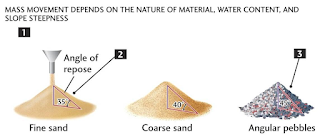Solublizers in Pharmacy
Solubilizers are the substances that aid in the solubilization or dissolution of hydrophobic compounds in aqueous media. Solubilizers are commonly used in the pharmaceutical industry to enhance the solubility and bioavailability of poorly soluble drugs. They work by forming a stable and homogeneous solution with the drug, thereby improving the dissolution rate and increasing the amount of drug available for absorption.
Types of Solubilizers:
Surfactants: Surfactants are the most commonly used solubilizers in the pharmaceutical industry. They have both hydrophobic and hydrophilic properties, making them useful in solubilizing hydrophobic drugs in water. Surfactants can be classified into four categories based on their charge: anionic, cationic, non-ionic, and zwitterionic.
Cyclodextrins: Cyclodextrins are cyclic oligosaccharides that are widely used as solubilizers in the pharmaceutical industry. They form inclusion complexes with hydrophobic drugs, resulting in improved solubility and stability.
Co-solvents: Co-solvents are polar organic solvents that are miscible with water. They are commonly used to enhance the solubility of poorly soluble drugs in water. Examples of co-solvents include ethanol, propylene glycol, and glycerol.
Lipids: Lipids are amphiphilic molecules that can solubilize both hydrophilic and hydrophobic drugs. Lipid-based formulations are often used to enhance the solubility and bioavailability of poorly soluble drugs.
Polymers: Polymers are macromolecules that can form complex structures with hydrophobic drugs, resulting in improved solubility and stability. Examples of polymers used as solubilizers in the pharmaceutical industry include polyvinylpyrrolidone (PVP) and hydroxypropyl methylcellulose (HPMC).
Different Pharmaceutical Solubilizers Available in the Market:
Tween 80: Tween 80 is a non-ionic surfactant that is commonly used to enhance the solubility of poorly soluble drugs. It is often used in oral and parenteral formulations.
Hydroxypropyl-beta-cyclodextrin (HPBCD): HPBCD is a cyclodextrin derivative that is used as a solubilizer in the pharmaceutical industry. It is often used in oral and topical formulations.
Polyethylene glycol (PEG): PEG is a water-soluble polymer that is used as a co-solvent and solubilizer in the pharmaceutical industry. It is often used in oral and parenteral formulations.
Labrasol: Labrasol is a surfactant that is commonly used to enhance the solubility and bioavailability of poorly soluble drugs. It is often used in oral and topical formulations.
Captisol: Captisol is a cyclodextrin derivative that is used as a solubilizer and stabilizer in the pharmaceutical industry. It is often used in parenteral formulations.
In conclusion, solubilizers are important in the pharmaceutical industry for improving the solubility and bioavailability of poorly soluble drugs. There are different types of solubilizers available in the market, including surfactants, cyclodextrins, co-solvents, lipids




Thanks for sharing! Please learn more about PCD pharma franchises and third-party manufacturing in India. Pharmaceutical Manufacturing Companies
ReplyDeleteMorigaon & Majuli, Assam
Very informative post! Explore the best PCD pharma and third-party manufacturing options in India.
ReplyDeletePCD Pharma Distributors, in all Sivasagar & Nalbari, Assam